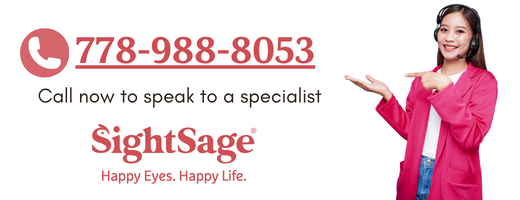The Silent Suffering of Dry Eye Disease: How to Find Relief
Dry eye disease or dry eye syndrome is common but often under-reported and underdiagnosed. Many people around the world are living with dry eye disease symptoms without knowing that they are the result of an underlying condition.
According to a 2022 study, dry eye disease prevalence was 3.5% in adults aged 18 to 67 years old and 7.8% in adults aged 68 years and older. The US population was around 331.9 million in 2021, which suggests that around 11 million adults and 25 million senior adults are living with dry eye disease.
In the medical world, there is a consensus that many people who experience dry eye symptoms don’t know they have dry eye disease nor are they always diagnosed soon enough. This can make dry eye disease a cause of silent suffering.
Dry Eye Disease Symptoms Can Interfere with Daily Life
Dry eye disease can affect the quality of your life, reduce your productivity at work, and make it difficult for you to enjoy time in front of screens. It can make reading tiring and challenging. Using your computer or phone can also become unpleasant because of the blurriness and eye dryness.
If you also experience light sensitivity, you may find it unpleasant to spend time outdoors. This can have detrimental effects for health and contribute to weight gain.

Dry eye disease can also make driving challenging. The pain, blurriness, and light sensitivity can increase your risk of road accidents during daytime. What’s more, dry eye can cause glare while driving at night.
Important: Before and while driving it’s best to avoid using eye drops commonly prescribed for dry eye syndrome. These can cause temporary blurriness that can make it difficult for you to follow the traffic signs and other cars on the road.
Although dry eye disease symptoms can be serious and interfere with daily life, the condition itself often remains undiagnosed. Next, let’s look at the reasons why.
Dry Eye Disease Often Remains Underdiagnosed
Although dry eye disease can cause serious discomfort and over time lead to eye damage that can cause vision loss, it’s often underappreciated by both the people who live with it and eye doctors. Why does this happen?
- Dry eye symptoms can often be attributed to other conditions such as tired eyes, digital eye strain, allergies, or autoimmune conditions.
- Early signs of dry eye such as a scratchy sensation in the eye or light sensitivity can be so subtle that you can easily ignore them.
- Dry eye symptoms can come and go. A good example is dry, blurry eyes in the morning that get better during the day.
- Dry eye occurs naturally as part of ageing. The tear glands produce fewer tears as we age, and this is a common cause of dry eye disease.
- Diagnosing dry eye requires a comprehensive eye exam that involves a slit lamp test or a Schirmer tear test. A simple eye exam that only measures refractive errors may fail to diagnose the condition. Some basic eye care practices may lack the resources to diagnose dry eyes in its early stages. What’s more, many people often skip regular eye exams.
- Dry eye can occur as a side effect of taking common medication such as antihistamines or oral contraceptives. It can be mistaken for a natural reaction to these drugs. Find out more about medications that cause dry eyes.
- Contact lens wear increases dry eye risk, but lens wearers may take their dry eye symptoms for granted.
- In its early stages, dry eye disease can be mild enough not to interfere with daily life and so can be ignored. Over time, it can progress to moderate dry eyes and severe dry eyes, which are more serious.
Going to the doctor is never fun, and when your eye symptoms don’t appear too serious, it’s easier to ignore them than to do anything about them.
Dry Eyes Causes Are Not Always Apparent
Chronic dry eye can occur for many reasons. Sometimes dry eyes causes are obvious, like constant exposure to wind, dust, or smoke. At other times, these causes can be more insidious.
A good example is prolonged screen time at home or work. By changing blinking patterns, excessive screen time may contribute to dry eye disease.
Since screens have become an integral part of daily life for many people, it’s easy to downplay any eye dryness resulting from them. Air conditioning systems and the lack of humidity they often lead to only compound the problem.

Dry eye can also occur because of certain medication or autoimmune conditions. Even a poor diet may contribute to the condition, to say nothing of ageing. Because the triggers for the condition are so many and so varied, their association with dry eyes is not always obvious.
It’s also possible for dry eye syndrome to be the result of multiple underlying causes, which only compounds the problem. For example, a person’s tear glands may start to produce fewer tears because of ageing.
The same person may undergo hormonal changes and use antihistamines to manage seasonal allergies. Add to that screen time in an air-conditioned environment, and eye dryness is highly likely.
Finding Relief from Dry Eyes
If your eyes have been feeling dry lately, you don’t have to wait for a dry eye diagnostic to start managing your condition. Seeing an eye doctor is important and so are regular eye checkups – to keep your eyes healthy it’s important not to put them off.
At the same time, there’s a lot you can do to relieve dry eyes. Here are a few useful tips you may want to consider:
- Apply a warm compress. It can soothe your eyes by providing much-needed moisture. Check our easy guide on how to make a warm compress.
- Use a humidifier to add moisture to indoor spaces. Use a portable one at work if you have to. At home, leave it on during the night and your eyes should feel less dry when you wake up.
- Take a break from using contacts. Contacts prevent the surface of your eyes from breathing and can make dry eyes worse. Switch to eyeglasses instead.
- Wear sunglasses outdoors. It will reduce the impact of wind on your eyes and also safeguard them from the harmful effects of UV rays.
- Reduce your alcohol and caffeine intake. These substances promote dehydration, which in some studies has been associated with dry eyes.
- Avoid exposure to smoke. If you’ve been thinking about quitting smoking, it’s a great time to take concrete steps in this direction. Try the Smoker’s Helpline in Canada, Smokefree in the US, or the equivalent local help line – just about every country has one.
- Take an eye health supplement. Your diet may not have all the nutrients your eyes need to produce a healthy tear film and work at their best. A natural supplement like SightC can provide your eyes with lutein, zeaxanthin, and other antioxidants, vitamins, and minerals. Learn more about SightC.

Dry eye disease may be common, but that doesn’t have to mean that you must ignore or quietly endure the symptoms it causes. Awareness about the condition is the first step to managing it.
Check the many other resources about dry eye disease on our blog. They may prove useful.
